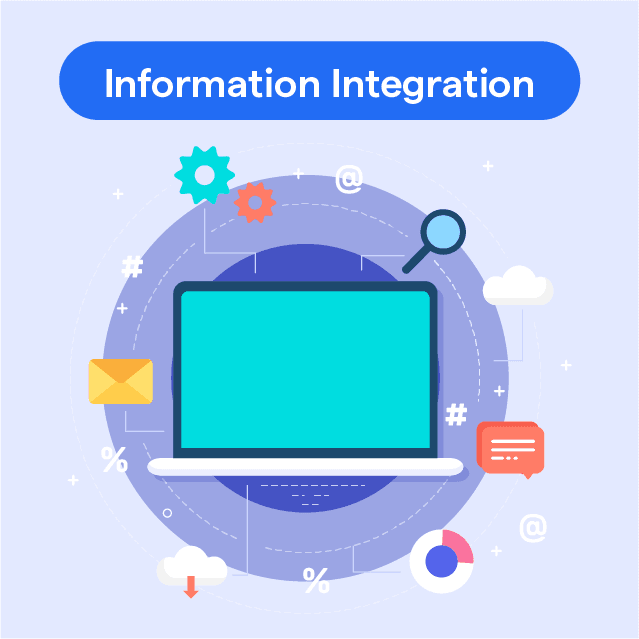What is Information Integration?
Information Integration is the process of merging data from different sources to provide a combined, holistic view of the data. This consolidated data enables businesses to make more informed, strategic decisions.
Why does Information Integration Matter?
Information Integration is central to modern business operations because it helps organizations break down data silos, enhance data quality, and facilitate more efficient data analysis and informed decision-making.
Information Integration Vs Data Integration
While they might seem similar, Information Integration and Data Integration differ in scope.
Data Integration involves merging raw data from disparate sources, while Information Integration dives deeper, taking context, semantics, and system-wide coherence into account to deliver meaningful, relationship-rich insights.
Information Integration: A Multi-Dimensional Task
Information Integration encompasses a myriad of tasks, including data consolidation, warehousing, migration, management, and cleaning.
The primary goal is ensuring data consistency and quality, so businesses can trust the data they use for decision-making.
Key Components of Information Integration
To make sense of Information Integration, we must understand its fundamental elements.
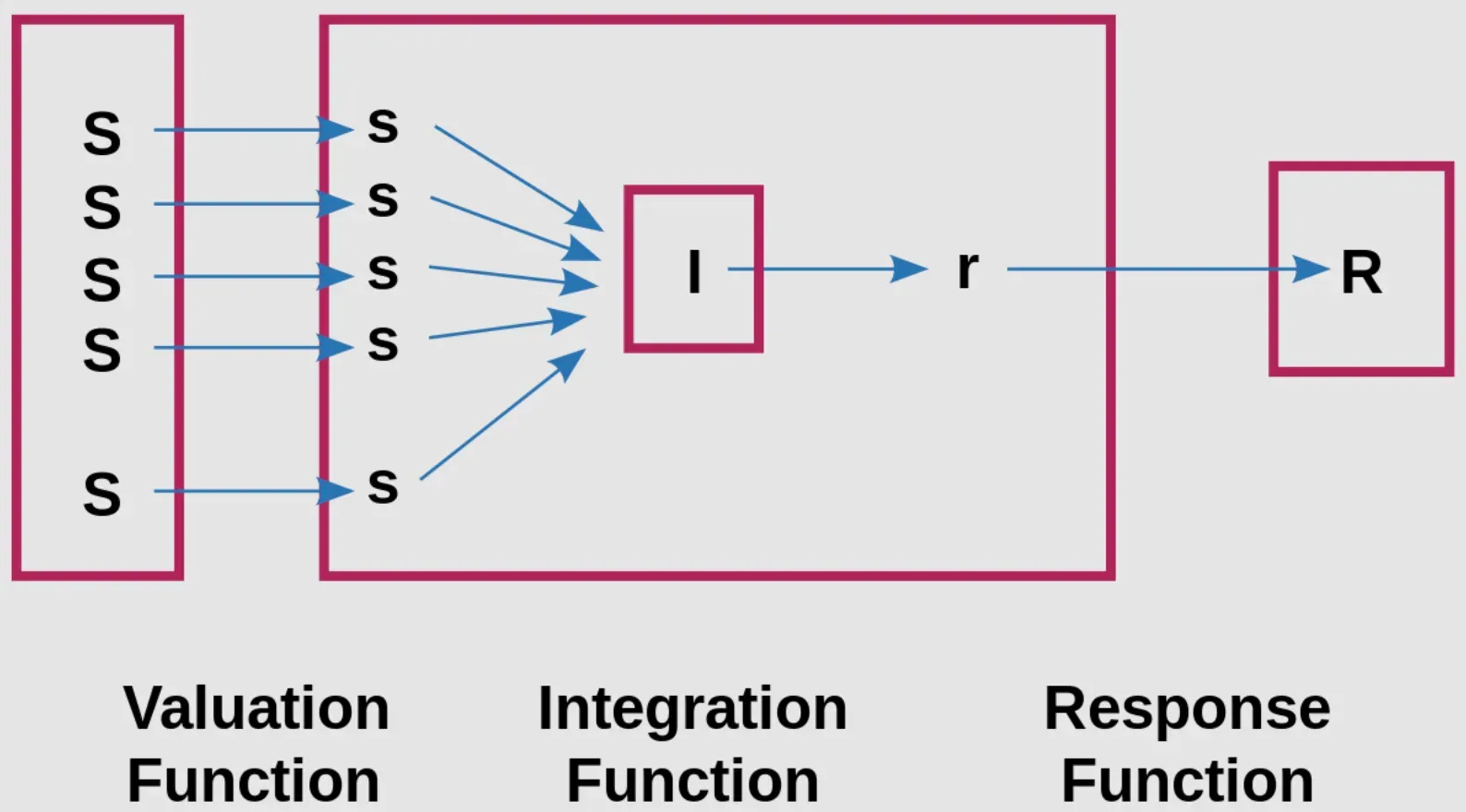
ETL (Extract, Transform, Load) Processes
ETL processes form the heart of Information Integration. They involve extracting data from various sources, transforming it into a consistent format, and loading it into a centralized database or data warehouse.
Data Warehousing
Data warehousing involves creating a central repository for integrated data, which aids in crafting business strategies by enabling complex data analysis, reporting, and decision-making.
Master Data Management (MDM)
Master Data Management involves curating and managing the most critical data of a business (the master data) to provide a single point of reference. It ensures data consistency, accuracy, and control.
Data Quality Management
Data Quality Management comprises practices, techniques, and tools that help ensure, maintain, and enhance the quality of data throughout its lifecycle.
Benefits and Challenges of Information Integration
As with any enterprise process, Information Integration comes with its perks and perils.
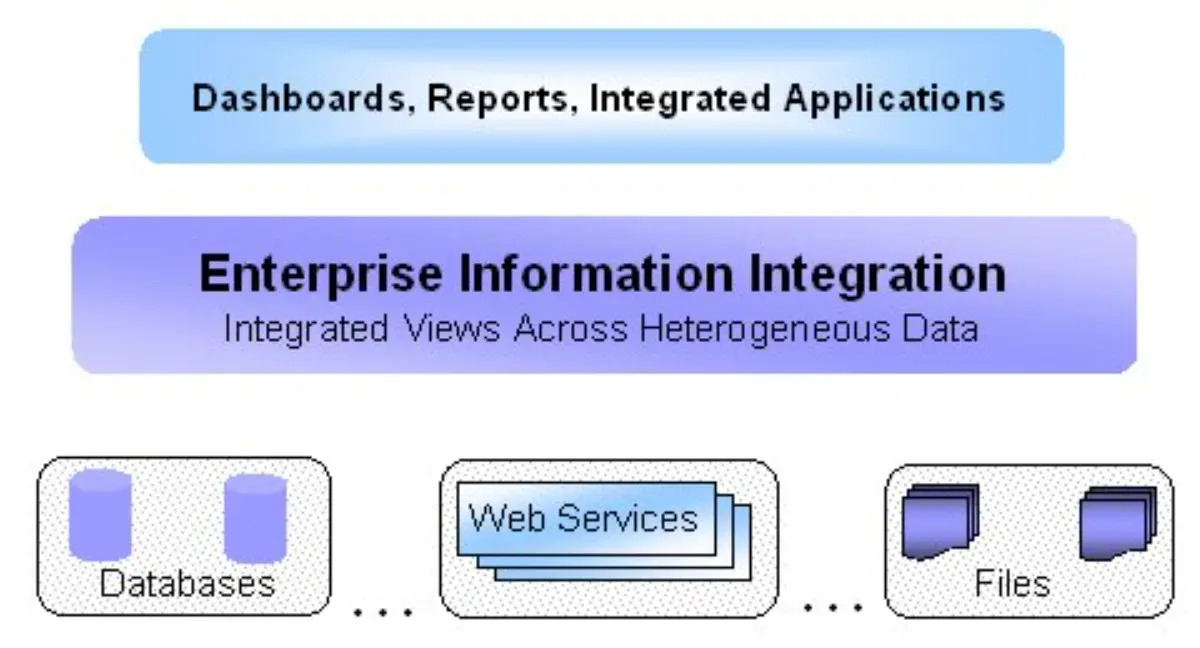
Advantages of Information Integration
Information Integration leads to benefits like improved data accessibility, enhanced decision-making, a consolidated view of business operations, and eventually better customer experiences and business growth.
Pain Points of Information Integration
Although beneficial, Information Integration can present challenges like dealing with data quality issues, overcoming data silos, ensuring data security, and handling the high costs and complexity of integration efforts.
Tackling Information Integration Issues
Addressing the challenges of Information Integration often requires strategies like implementing sound data governance policies, investing in robust integration tools, ensuring data security measures, and fostering a data-driven culture within the organization.
Exploring Hybrid Integration Platforms
Hybrid Integration Platforms (HIP), which offer flexibility for integrating data across on-premises, cloud-based, and B2B applications, have gained traction recently. They can streamline Information Integration and bridge the gap between different technologies.
Information Integration Strategies
To make Information Integration successful, it's crucial to adopt a suitable strategy based on specific business needs and the unique landscape of existing data.
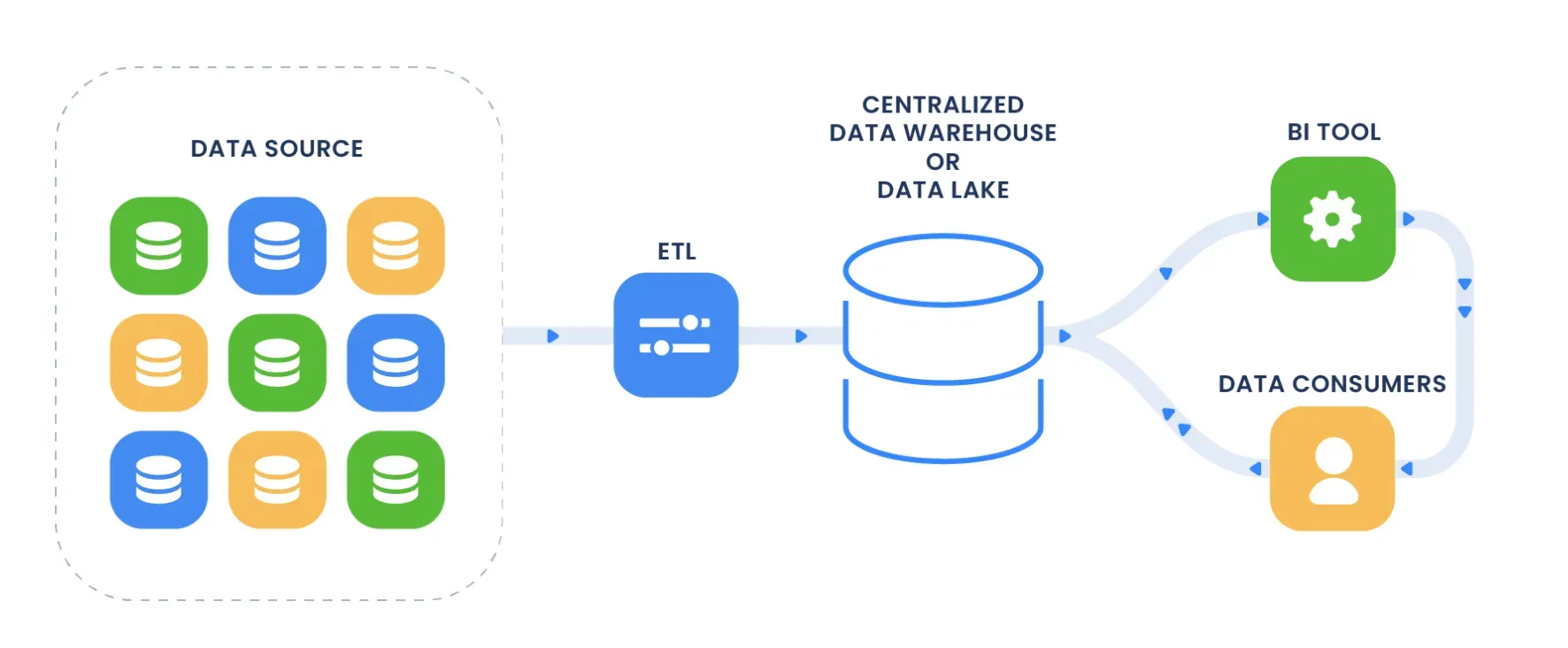
Data Consolidation
Data consolidation involves integrating data from different sources into a single database. This strategy reduces data redundancy, improves data consistency, and enables easier data analysis.
Data Propagation (ETL)
Data Propagation, or ETL, involves extracting data, transforming it into a consistent format, and loading it into a target database. It's useful for handling large volumes of data and maintaining data quality.
Data Virtualization
Data virtualization creates an abstract layer above the data sources, enabling applications to access data without needing to know its physical location. It provides real-time data integration and facilitates a flexible, agile approach to Information Integration.
Federation or Data Services
The Federation strategy (also known as Data Services) encompasses creating data services that provide integrated data to applications. This approach reduces data redundancy and increases agility in delivering integrated data.
Key Tools in Information Integration
There's a wide array of tools available to help with Information Integration – each with its own strengths and weaknesses.
ETL Tools
ETL tools, like Informatica PowerCenter and IBM DataStage, support the extraction, transformation, and loading process within Information Integration, playing a crucial role in managing large volumes of data.
Data Integration Platforms
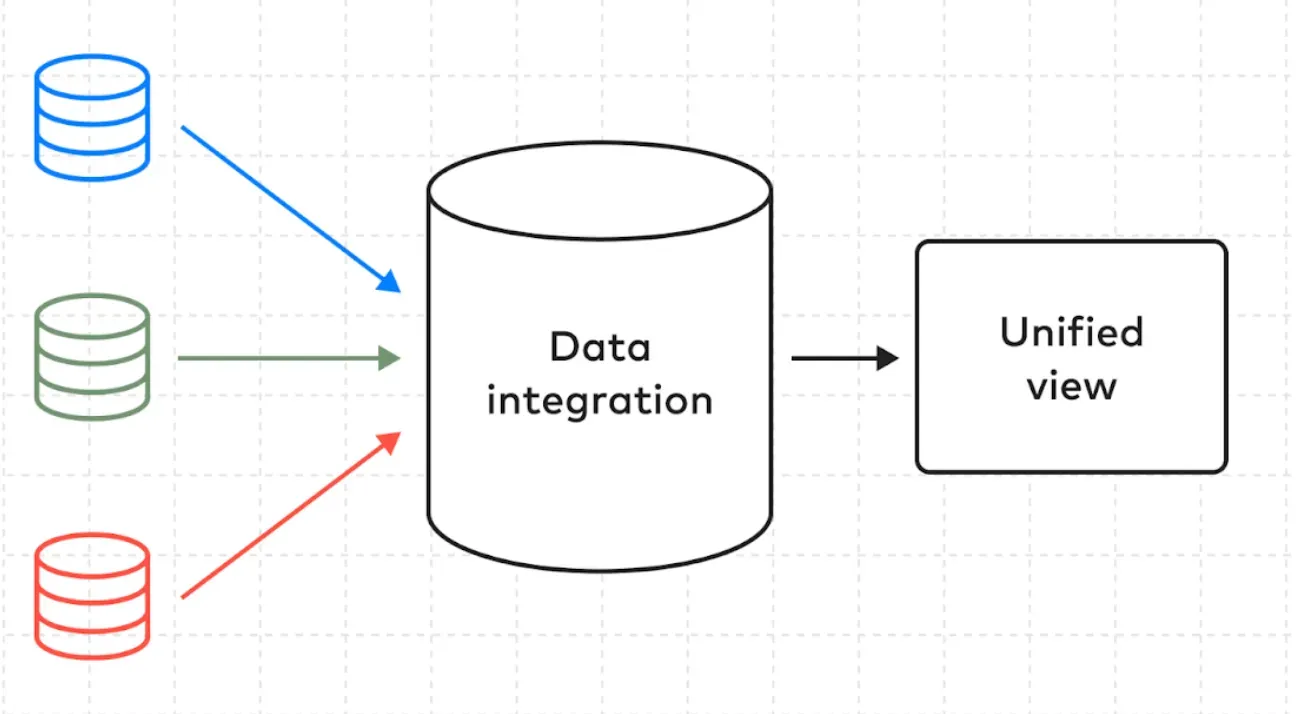
Data Integration Platforms (DIPs) like Talend or Microsoft SQL Server Integration Services provide comprehensive solutions for data transformation, integration, and management, facilitating a smoother integration process.
Data Quality Tools
DQ tools, such as Ataccama or Trillium, help ensure the correctness, completeness, and consistency of data, playing a crucial role in Information Integration.
MDM Tools
MDM tools like SAP Master Data Governance or Oracle MDM manage the master data of an organization, ensuring that key business data is accurate and consistent across multiple systems.
Information Integration in Modern Architecture
In the modern data landscape, Information Integration plays a pivotal role, shaping the data strategies of many organizations.
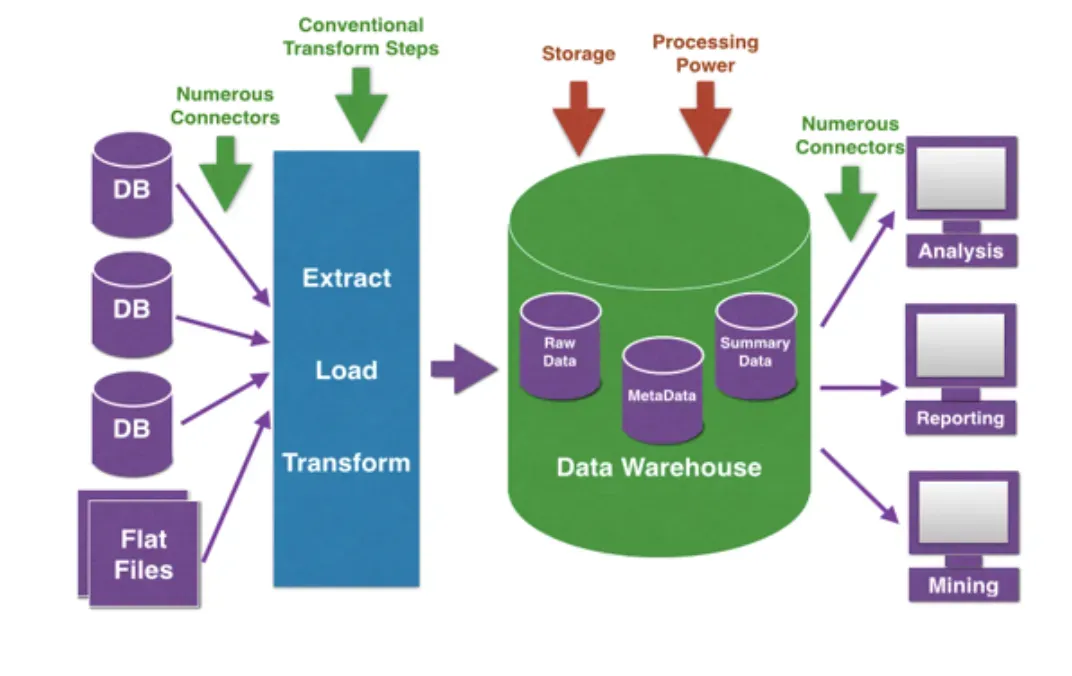
Information Integration in Big Data
In the Big Data landscape, Information Integration helps tackle the Volume, Variety, and Velocity challenges by enabling the efficient merging of vast amounts of diverse data in real-time.
Information Integration in IoT
Internet of Things (IoT) data widely varies in format and type. Information Integration is vital for combining this data, making it meaningful, and drawing actionable insights from it.
Information Integration in Cloud Computing
In cloud environments, Information Integration enables organizations to pull data from disparate cloud-based, on-premises sources and applications, creating a unified, up-to-date view of the data.
Suggested Reading: Cloud Computing: Types and Challenges
Information Integration in Machine learning
Information Integration directly impacts the effectiveness of Machine Learning algorithms. The quality and diversity of integrated data can significantly affect the accuracy of predictions and models.
The Future of Information Integration
The evolution of Information Integration isn't stopping anytime soon. Let's sneak a peek into its future.

Role of AI in Information Integration
Artificial Intelligence (AI) and Machine Learning (ML) will play increasing roles in Information Integration, thanks to their potential for automating data matching, improving data quality checks, and simplifying complex integration tasks.
Emergence of Real-time Information Integration
The increasing need for real-time business insights is set to drive the demand for real-time Information Integration, enabling businesses to make swift, informed decisions.
Growing Focus on Data Privacy
As data privacy regulations become stricter, their impact on Information Integration will grow. Organizations will need integration strategies that not only unify data but also respect privacy norms.
Adoption of Hybrid Integration
As more businesses adopt a mix of on-premises and cloud solutions, hybrid integration platforms, which offer flexibility across these environments, will see increased uptake for Information Integration tasks.
Frequently Asked Questions (FAQs)
What are the common challenges faced during Information Integration?
Data incompatibility, security and privacy concerns, scalability issues, and cost/resource constraints are some common challenges faced during Information Integration.
What technologies are commonly used for Information Integration?
ETL tools, ESB, data federation, MDM, and data warehousing are commonly used technologies for Information Integration.
How does Information Integration improve decision-making?
Information Integration provides a holistic view of data, ensuring accurate and timely information, which leads to informed decision-making.
What are the benefits of Information Integration?
Benefits of Information Integration include improved data accuracy, enhanced data consistency, increased operational efficiency, and better decision-making.
What is the difference between physical and logical Information Integration?
Physical Integration involves physically moving or replicating data, while logical Integration creates a virtual view of data without physically moving it, using technologies like data federation or virtual data integration.
